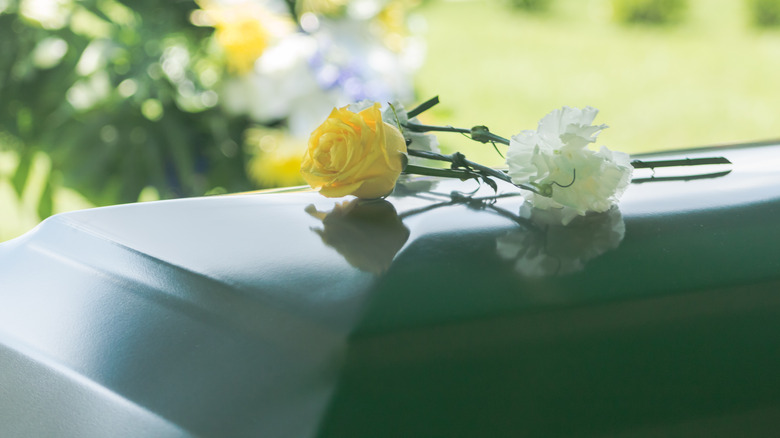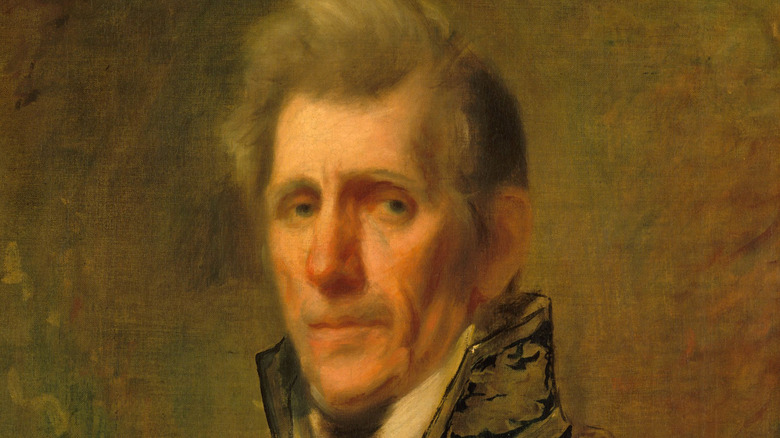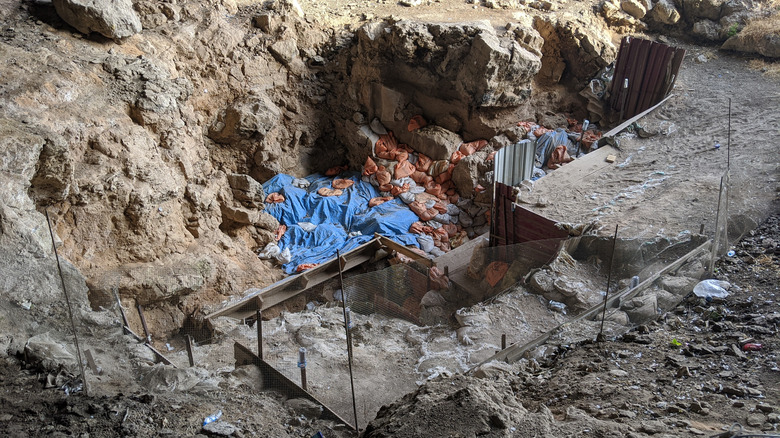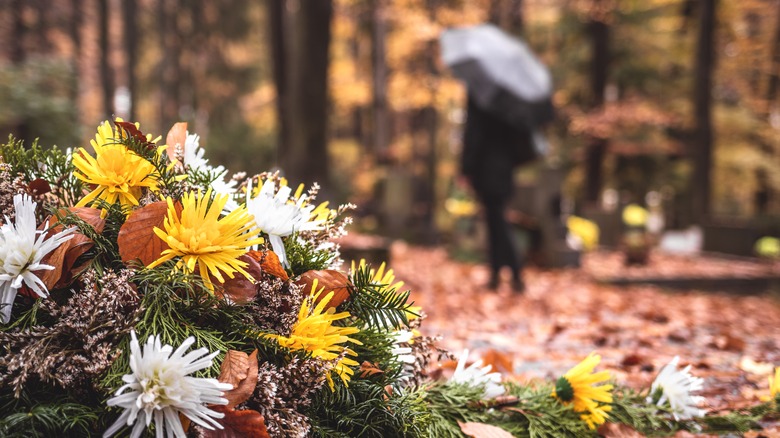What Is The Real Significance Of Flowers At A Funeral?
With the passing of a loved one comes many variations of grief and different ways of laying the deceased to rest. However, when it comes to funeral practice, there are still a few details that most have in common — flowers being one of them. If you've attended a funeral service or seen one on television, you've seen the intricate floral arrangements adorn the otherwise somber surroundings.
Over the years, flowers have become almost synonymous with events, both happy and sad. This could be the reason why many don't think twice when it comes to the presence of flowers at a funeral. But there is a significance behind the beautifully placed decor, and it might be different than what's commonly believed. Flowers themselves are symbolic, with each color representing a different emotion or sentiment that can be used as a form of expression for a multitude of occasions, according to Funeral Basics. It turns out there are quite a few notable reasons for the use of flowers at funerals.
Flowers aren't just there because they smell nice
Some believe that the use of flowers at funerals is simply to cover up the smell of the dead body. Though if this were the case, flowers wouldn't be necessary during funerals where the remains have been cremated or ones with no remains at all — yet flowers are present on each of these occasions. According to In Lieu of Flowers, the theory of flowers being necessary to cover the odor comes from one particularly fragrant moment in history. In 1874, President Andrew Jackson was buried, and his body had not been embalmed. This meant that by the time his funeral was to take place, his remains had long since begun the process of decomposition, leading to an overwhelming and offensive odor. The president's decomposing corpse was so powerfully pungent that the undertaker, Lazarus C. Shepard, filled the coffin with flowers and shut the lid.
The actions of the undertaker thankfully covered the scent of rotting flesh long enough for a proper funeral to take place. This story is a popular example of why flowers are common funeral practice. However, there's evidence of flowers during burials that date back long before Jackson's death — and before his life, too, for that matter.
The use of flowers at burial sites dates back thousands of years
In 1951, Dr. Ralph Solecki excavated the Shanidar Cave in Iraq. In the cave, the skeleton of a Neanderthal was found with pollen deposits from various wildflowers (per San Tan Mountian View Funeral Home and Advance Planning Center). According to Phaneuf, the flowers identified with the body were cornflower, grape hyacinth, hollyhock, and thistle. The Shanidar discovery is over 62,000 thousand years old and now the oldest recorded use of flowers at a burial site.
It's impossible to know whether these flowers were used for symbolic reasons or for the same reason flowers were tossed in President Andrew Jackson's coffin, but it makes the association between flowers and death a prominent piece of history. Today, the flower arrangements seen at funerals and burial sites carry more meaning and emotion behind them. Their purpose isn't often discussed but remains highly significant in what, for many, is one of the most challenging times in their life.
The imagery of flowers lives on in the memories of those grieving
Flowers — no matter how perfectly or imperfectly arranged — have a way of creating an atmosphere that feels more soothing and lovely. The imagery built by the vivid colors and fragrance of the floral arrangements at a funeral is what lives on in the mind's eye of those in attendance. As mentioned in an article in In Lieu of Flowers, "Flowers do not wither and die in the mind of the bereaved. They are recalled time and again as indelible memories." The mere presence of flowers acts as a way to cushion the blow of what is otherwise a saddening memory for those grieving the loss of their loved one.
At one point, there was even a specific role regarding flowers during a funeral service. Flower ladies were a group of women who would spread flowers from the place of the funeral to the transport vehicle and then help arrange flowers at the final resting place for the body. According to In Lieu of Flowers, this group of women was usually close friends or family to the deceased, and the responsibility of being a flower lady was a great honor. These women created imagery that remained in the minds and hearts of those grieving for years to come.



